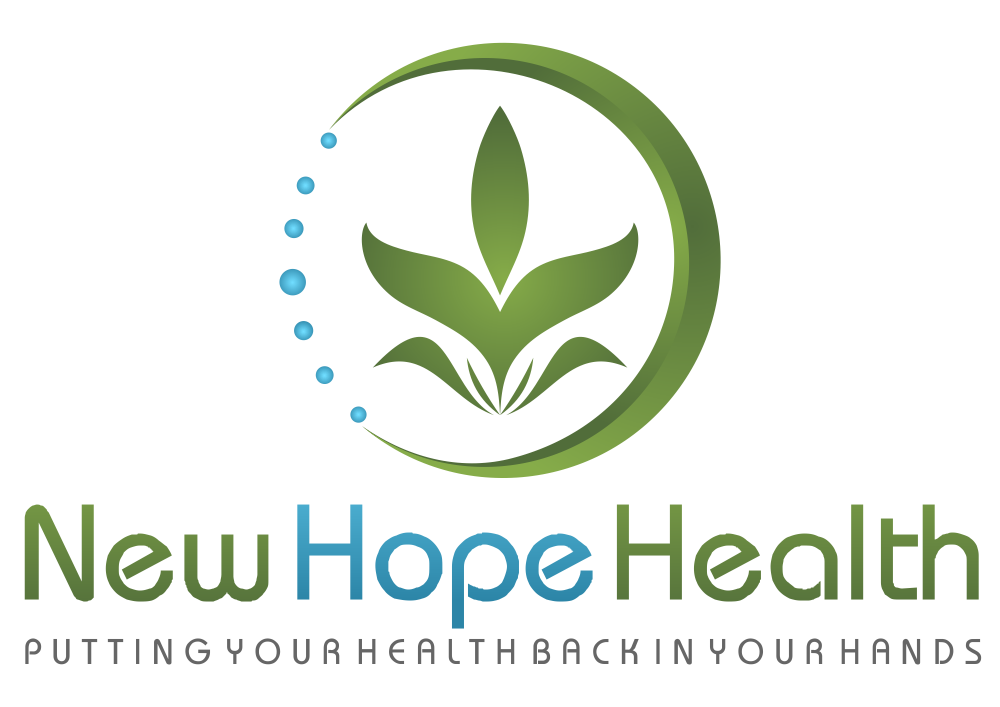
The term metabolic refers to the chemical processes that sustain life. A syndrome is a group of symptoms that occur together. So metabolic syndrome is a group of symptoms that undermine the body’s normal ability to properly sustain life.
Metabolic syndrome is diagnosed when a person has 3 or more of the following 5 conditions:1
- High blood pressure
- High cholesterol
- High triglycerides
- High blood sugar/insulin resistance
- Obesity (waist circumference of 40 inches or more in men, 35 inches or more in women)
It’s important to note that any one of these conditions can cause a domino effect of challenges in the body, let alone the culmination of multiple issues. All of these are risk factors for cardiovascular disease and Type 2 diabetes; however the combination of 3 or more puts a person at an even greater risk. Metabolic syndrome is also associated with fatty liver, gout, gall stones, polycystic ovarian syndrome and sleep apnea.1
What is happening to the body with metabolic syndrome?
Blood pressure is the measure of resistance when blood is moving through the blood vessels. According to the most recent standards set by the American Heart Association, blood pressure is considered elevated at 120/80.2 High blood pressure means that your heart has to work harder to push blood to all the cells of your body. This blood supply is important to life because it carries with it oxygen and nutrients. Over time, high blood pressure can damage your arteries increasing the need of cholesterol to patch them up.
Cholesterol gets a bad rap. It is essential to life, but it can cause problems if the concentration of it gets too high. Cholesterol is a waxy fatty substance found in all cells in the body and is important for digestion (a component of bile), assimilation of fat-soluble vitamins and making hormones.3 It is also important for patching damaged arteries as mentioned above. This patching cholesterol is often referred to as LDL (low density lipoprotein).3 When your LDL is high, it’s likely that your arteries are at risk, necessitating the need for the repair to be done. Damaged arteries put you at risk for coronary artery disease, stroke and aortic aneurisms.3 Although this patch work is potentially lifesaving, if you have enough damage and thus an accumulation of patches, it can eventually close off blood supply to a certain area where the blockage occurs. Your body actually makes all the cholesterol that it needs so getting cholesterol in the diet (primarily from animal products) often creates an excessive burden.
Triglycerides are a type of fat in the blood that have been found to harden arteries if elevated over time. Elevated triglycerides have also been associated with pancreatitis, obesity and diabetes.4 Although genetics can play a role, the most common cause of high triglycerides stems from a poor diet and lifestyle (namely, animal products and refined sugars).5
Blood sugar/insulin resistance- In a healthy body, when glucose in the blood is increased (from food or drinks consumed), the beta cells of the pancreas are signaled to produce insulin. The insulin helps that glucose move into the cells, specifically the cells of the brain, muscles and liver. Over time, with a poor diet, the cells in the body can start to become insulin snobs. They won’t let insulin into the cell. In this case, the sugar in the blood stays in the blood, resulting in high-fasting blood glucose.6 This creates many challenges for the body, namely with diabetes, obesity and the various complications that ensue.
Obesity is primarily a lifestyle condition that has multiple causes, but most commonly a poor diet and lifestyle. The health care industry uses a simple evaluation called body mass index (BMI) to diagnose overweight and obesity. The body mass index is a height-to-weight calculation. A person is considered overweight when their BMI is between 25-29.9 and obese if they have a BMI of 30 or higher. If you’d like to calculate your own BMI, there are lots of simple online calculators. Just google “BMI calculator” and then enter in your height and weight.
The culmination of all of these symptoms create the perfect storm for a metabolic nightmare. Each one of these put you at risk for heart disease; having multiple factors increases your risk even more for heart disease as well as other health complications.
The good news: You can reverse this issue with diet and lifestyle upgrades!7
Next steps to help improve metabolic syndrome:
Although there are medications that can be used for each specific symptom, they all come with side effects and interactions and therefore should be considered as a last resort. The best place to start is by looking at diet and lifestyle factors.
In thinking about how to reverse the issue(s), we want to look at the steps that will improve not just one factor but all five of the symptoms that comprise this condition. This will ensure you are getting the greatest results for your effort.
What can you do to support your best health?
- Exercise improves metabolic syndrome.8
- Eliminate or reduce meat. Eating meat increases your risk for metabolic syndrome.9
- Improve the microbiome by using probiotics and eating fermented vegetables.10
- Check vitamin D levels by asking your doctor to run a Vitamin D 25 hydroxy test. If your levels are low, you may want to spend time daily in the sunshine and also supplement with a good quality vitamin D.11
Never give up because there’s always hope! No matter how far gone you feel that you are or how long you have struggled with these issues, as long as you’re still breathing, you can reverse these conditions and find radiant health again (or for the first time). I promise you, in my clinic I have seen miracles. It’s never too late. If you need help, please don’t wait another day! You and your family and your mission are worth the effort!
Reference list:
1. Huang PL. A comprehensive definition for metabolic syndrome. DMM Dis Model Mech. 2009. doi:10.1242/dmm.001180
2. American Heart Association. https://www.heart.org/en/health-topics/high-blood-pressure/the-facts-about-high-blood-pressure. Accessed June 17, 2020.
3. Huff T, Jialal I. Physiology, Cholesterol.; 2018.
4. Brahm A, Hegele RA. Hypertriglyceridemia. Nutrients. 2013. doi:10.3390/nu5030981
5. Laufs U, Parhofer KG, Ginsberg HN, Hegele RA. Clinical review on triglycerides. Eur Heart J. 2020. doi:10.1093/eurheartj/ehz785
6. Giugliano D, Ceriello A, Esposito K. Glucose metabolism and hyperglycemia. In: American Journal of Clinical Nutrition. ; 2008. doi:10.1093/ajcn/87.1.217s
7. Dragusha G, Elezi A, Dragusha S, Gorani D, Begolli L, Saiti V. Treatment benefits on metabolic syndrome with diet and physical activity. Bosn J Basic Med Sci. 2010. doi:10.17305/bjbms.2010.2718
8. Golbidi S, Mesdaghinia A, Laher I. Exercise in the metabolic syndrome. Oxid Med Cell Longev. 2012. doi:10.1155/2012/349710
9. Rizzo NS, Sabaté J, Jaceldo-Siegl K, Fraser GE. Vegetarian dietary patterns are associated with a lower risk of metabolic syndrome: The Adventist Health Study 2. Diabetes Care. 2011. doi:10.2337/dc10-1221
10. He M, Shi B. Gut microbiota as a potential target of metabolic syndrome: The role of probiotics and prebiotics. Cell Biosci. 2017. doi:10.1186/s13578-017-0183-1
11. Thomas GN, Hartaigh BÓ, Bosch JA, et al. Vitamin D levels predict all-cause and cardiovascular disease mortality in subjects with the metabolic syndrome: The Ludwigshafen risk and cardiovascular health (LURIC) study. Diabetes Care. 2012. doi:10.2337/dc11-1714
Nothing said or implied in this post is intended to treat, cure, diagnose or prevent any disease. It does not take the place of a qualified health care practitioner and is intended for educational purposes only.

Dr. LeAnn Fritz, PhD
Dr. LeAnn is a practitioner, coach, speaker, consultant, and the founder of New Hope Health. She is also the author of The Quantum Weight Loss Blueprint, and Get Healthy Now. She is laser-focused on practical, evidence-based practices to empower her clients to get real results that last. She sets the bar when it comes to radiant health that will change every area of your life forevermore.
Recent Posts
Parasites- Living Inside Your Body, Without Paying Rent!
Parasites…I know…the thought of them living inside your body feels like something from a horror
Holistic Detox: A Naturopathic Doctor’s Guide to Cleansing Your Body for Optimal Health
Detox is a powerful way to reset your body and enhance your health. As a
Watermelon Slurpy…Upgraded!
It’s summer and it’s HOT! You’re looking for a refreshing cold drink that will give
Curious about achieving your highest level of health?
Schedule your consultation with Dr. LeAnn today, and get your health back in your hands.


